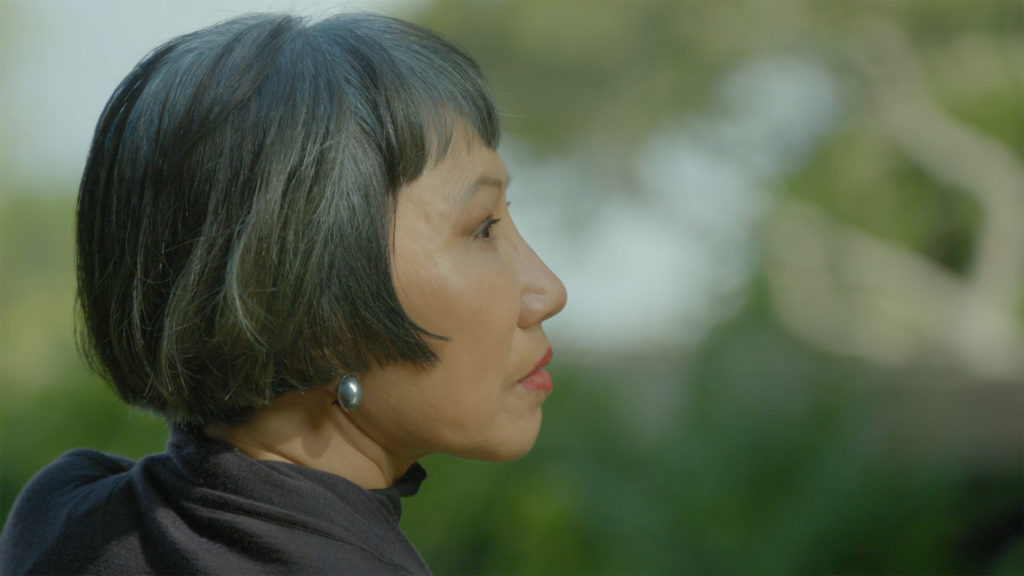Writer Amy Tan’s hit debut novel, “The Joy Luck Club” (1989), catapulted her to commercial and critical success, spending over 40 weeks on The New York Times Best Seller list. With the 1993 blockbuster film adaption that followed, which was selected for the National Film Registry in 2020, as well as additional bestselling novels, librettos, short stories and memoirs, Tan firmly established herself as one of the most prominent and respected literary voices working today. Amy Tan: Unintended Memoir is an intimate portrait of the groundbreaking author that interweaves archival imagery, including home movies and personal photographs, animation and original interviews to tell the inspiring story of Tan’s life and career.
The last completed film from director James Redford (1962-2020), Amy Tan: Unintended Memoir features new interviews with Tan; fellow writers Kevin Kwan, Isabel Allende, Dave Barry and Ronald Bass; actors from “The Joy Luck Club” including Lisa Lu, Rosalind Chao, Tamlyn Tomita and Kieu Chinh; friends and family. Tan opens up to Redford with remarkable frankness about traumas she’s faced in her life and how her writing has helped her heal. The film traces her meteoric rise from the point when she picked up fiction writing as a mental break from her heavy freelance business writing schedule and was offered three book deals after completing only three short stories.
Born to Chinese immigrant parents in Oakland, California in 1952, it would be decades before Tan would come to fully understand how her mother’s battle with suicidal tendencies was rooted in a legacy of suffering common to women who survived the ancient Chinese tradition of concubinage. However, this legacy provides Tan an inexhaustible well of creative inspiration, and her work has made her a global icon for Asian Americans. Tan’s other bestselling novels include “The Kitchen God’s Wife,” “The Hundred Secret Senses,” “The Bonesetter’s Daughter,” “Saving Fish from Drowning” and “The Valley of Amazement,” and her work has been translated into 35 languages. Featuring footage of her performing as the lead singer of the Rock Bottom Remainders, a band comprised of bestselling authors including Stephen King, Scott Turow and Barry, as well as a look at her recent explorations in nature journal sketching, the film offers an inside look at a brave artist whose humanity infuses all of her work.
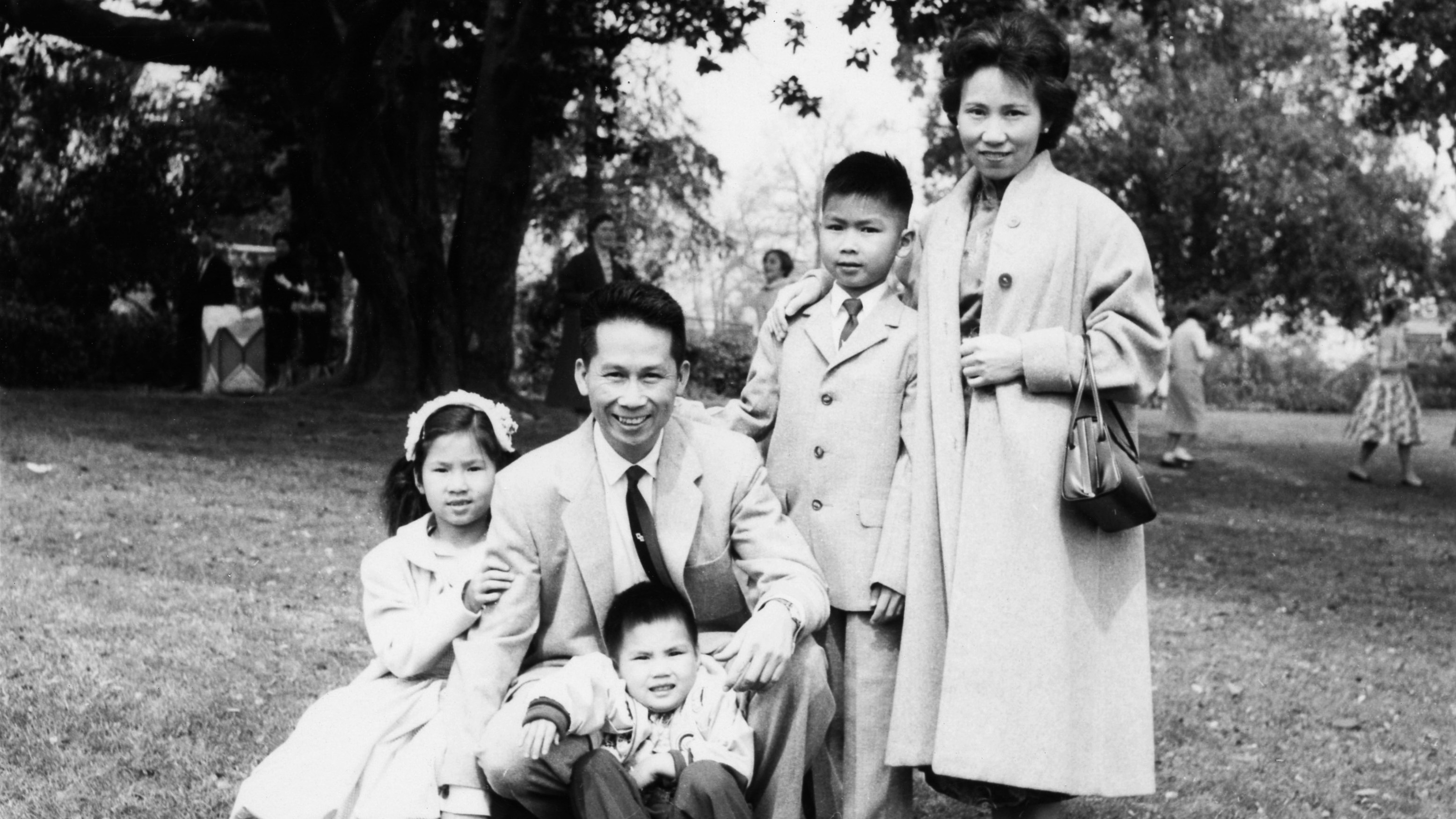
You grew up in and around the Bay Area right? Do you think that had an appreciable effect on your career? Being from the Bay myself I’ve always thought it kind of uniquely prepared me for a creative career in a way.
Yeah I grew up in Sebastopol, so I was kind of out in the country in west Sonoma County, and I went to San Francisco State. I love being here. I love Northern California. I did apply to some schools in LA and didn’t get in and that was part of it, but I think part of me was always kind of assuming I would stay and it just made sense to go to San Francisco. So the fact that I haven’t left definitely affected my career because it meant that everything started here. I never went to New York and never went to LA, so maybe I would have ended up going in to Fiction or something. I could have taken a totally different direction had I gotten somewhere else. I wasn’t initially set on Doc work. That’s definitely what is vibrant and interesting in the Bay Area.
Yeah right now it seems like LA is so… like you were saying, if you’re lucky it’s fiction, but honestly it feels like more Reality or Advertising right now. At least from an “everyday” angle. Or you get roped in to Social Media [laughs].
It’s interesting, yeah. I’m on a forum with other editors and most of them, I think, are in LA and it sounds like there’s a lot of, now that documentary is becoming such a huge kind of genre on the streaming channels, it’s kind of all reality. All the networks are trying to like kind of merge it with the Reality TV model, just like “let’s turn them out and get them done” so these Doc editors are like suddenly put in a situation where they’re expected to edit a Doc, but under very different circumstances. And it’s kind of a strange trend because docs are probably more watched now than ever, but also that leads to this sort of need to just create “more and more and more and more content!”
So you edited this whole thing using Productions, and I was just reading your blog post on Medium about it, but I was wondering if you could kind of like briefly walk me through like what the differences are specifically to using that workflow. Is it just for collaboration or would a solo editor benefit from it too? Cause my buddy just finished a feature documentary called In the Valley of the Dark and it was killing him cause he had tons of archival and just the one project file was just getting so bogged down and since he was on an old iMac it was angry with him [laughs].
Yeah. I think for me that the collaboration stuff wasn’t a major draw. Like, if that was all that was out there, if it was just sort of like a revamped Team Projects sort of thing, I probably wouldn’t even pay attention to it. I do think those features look great and the collaboration benefits were there, like I was working with an assistant and we had a much easier time than I’ve had in the past exchanging media and exchanging sequences, but I would say any feature in Premiere should be in Productions if it were up to me [laughs]. If I was a Post Supervisor and I took on a project in Premiere, whether it’s a collaborative or a solo editor, I would say it should be in Productions. It just made a world of difference on stability. I was where your friend was on the last, honestly every other feature doc… by the end you’re just sorta like “Oooooh, don’t move too fast! Don’t touch the screen!” You know [laughs], but in this case, it was like no different when I opened the project at the end versus the beginning it’s just *pft* there it is. And you’re just opening tiny project files kind of one at a time, so it’s much more nimble.
Gotcha. So there’s a “Projects” file and then in there there’s actual Projects or…
Yeah honestly it’s a lot more like how Avid structures its projects. In Avid you have all your bins, your sequences, everything as their own files in the finder level, they’re their own individual files in a project folder, so you have a project folder, then there’s all your individual bins, et cetera. So it’s kind of like that, except instead of all the different things, it’s just within that “Production Folder”, you have a directory of all your different projects and they can be within sub folders and all that. So you have a “Production Folder” where everything lives and that that’s kind of delicate, like you don’t want to mess with that, you want to do all your saves and copies and all that within Premiere, but yeah you don’t have a single project file, you have (in my case) about a hundred probably. A bunch of those were like, junk that I wouldn’t actually use, that you ended up with tons of project files, just like a normal a Premiere project file. Like I think the file extension is exactly the same. You could take one out of the production folder, open it on its own. But as long as it’s in that production folder, it was created in there, it works as a unit.
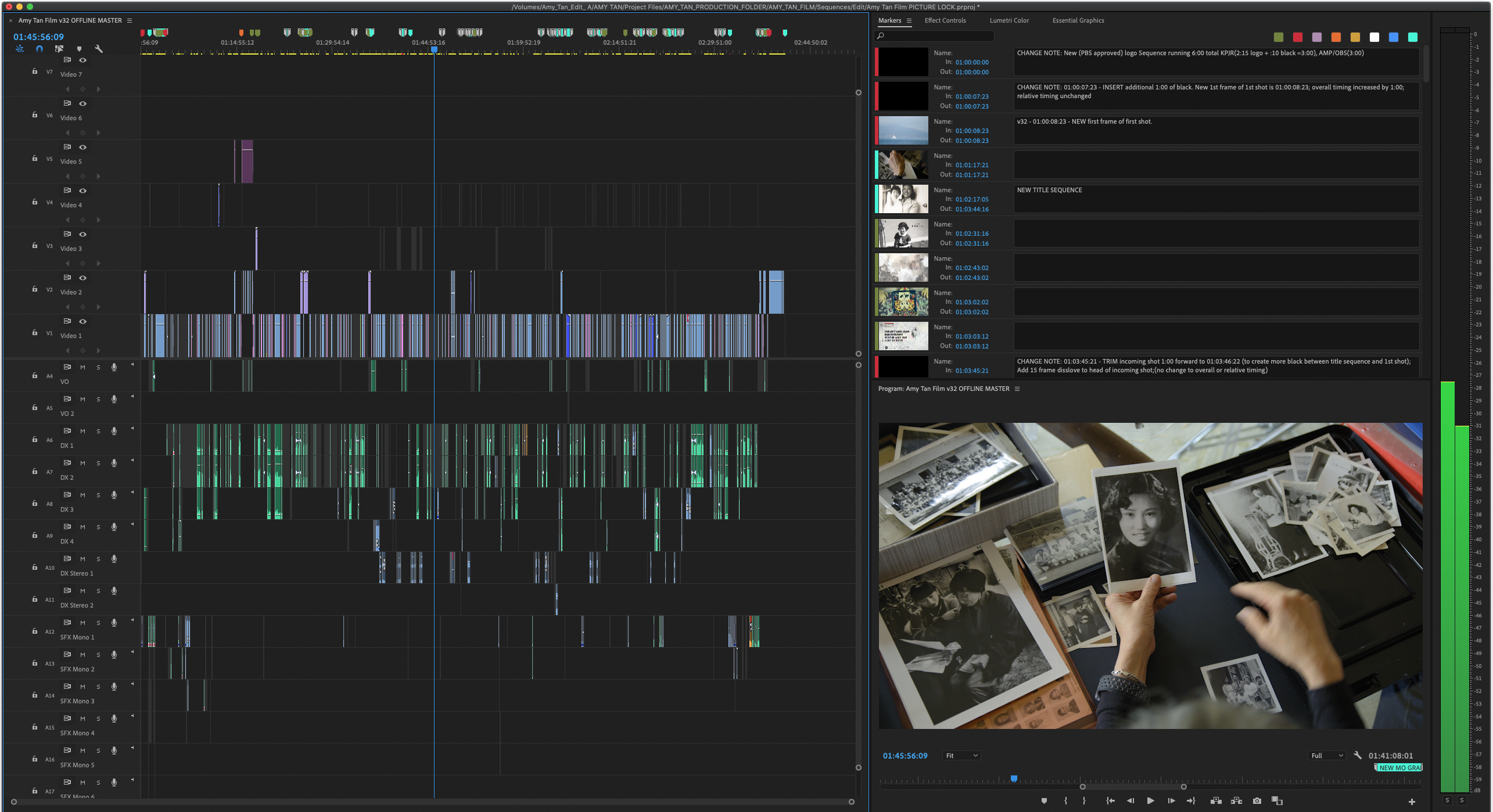
And so how were you syncing? Cause you said you weren’t using the sort of like, built-in tools in your blog. Were you just syncing through regular old cloud services? How did that process work?
The syncing was very manual, very old-school, because we were both working at home separately. Nearby, but you know, separately. There’s never a point where I was like “I need those dailies so I can get a cut out by noon!” You know, there was never like a rush quite like that. A little bit towards the end, maybe, but basically the few times we had a new shoot or we got a bunch of new archival stuff, it would go get processed, she would sort it, and if it was small enough to upload, she’d put it on Dropbox and I’d download it or she’d drive a drive over or I’d go pick up the drive. Basically we started with mirrored drives that I think another assistant or I set up initially, so we started with the same folder structure, and then if I move stuff around on my end, basically she’d eventually figure it out cause I’d send her a project and she open up and whatever was offline, she’d kind of figure out by deduction what was moved around. But because we weren’t doing that, like real-time collaboration, we didn’t need to have like a 100% exact file folder structure. There was there was a little room for things to be kind of customized for her and for me.
So how were you organizing your archival footage? There was a ton right? Like, were you going by date in folders? Did you just have a giant string out? Something else?
That was something that I really let my assistant start with and get a handle on. I didn’t watch all of it because we had probably 100 hours of archival, I think is what I added up at the end, so more than there was production material, because Amy Tan has been a famous person for like 30 years [laughs]. She’s done a million interviews and a lot of them are on TV so we had a ton of these really long interviews and TV spots and public talks and all that kind of stuff. So what we did was, she sorted them by book basically.
Oh no kidding?
Yeah in some cases we had like multiple books as one kind of “assembly”. So like The Joy Luck Club, that was the launch, and there’d be “The Joy Luck Club Assembly”, and that’d be everything relevant to that time period. And then there was the next one, The Kitchen God’s Wife, and then there was the two kids’ stories, and then like two in a row that were pretty close and kind of a same time period. Sort of like that, structured by book or set of books that represented a time period in her life. So we did was an assembly for each one, a giant string out in our case (assembly for me can mean different things in different contexts), but she would just do a big old string out of everything and then would go through and listen to everything and mark up, using markers, the relevant bits and kind of highlight or lift up the stuff that she knew was kind of what we were looking for. That way I didn’t have to look at something in entirety, unless I want it to, I could just go through her markers and her highlights.
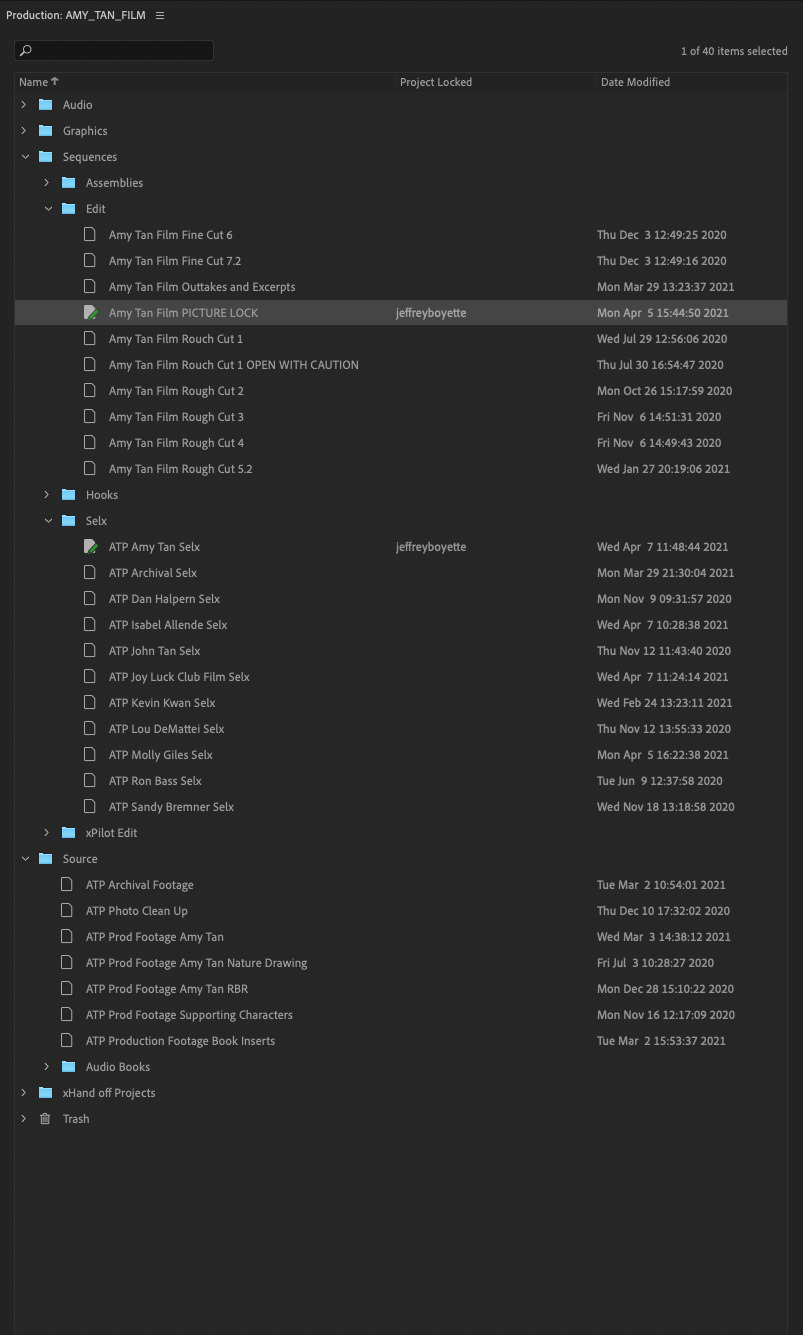
So your sort of workflow is definitely the, like, “Selects go to layer 2, Super Selects go to 3.” And then using markers to highlight sections with notes and stuff?
Yeah, I love markers. I hope that’s something Premiere improves on going forward because I find them invaluable. I wish I could do things like copy and paste a bunch of markers, although they’ve added a few new features. Like you can copy a clip and the marker will travel with it when you paste it and stuff, but yeah I love markers.
I saw somewhere else that you’ve got a really customized keyboard or interface or something? Are you an editing surface type guy?
Well I’ve got this [shows a Behringer X-Touch Mini MIDI controller and laughs]. It’s like $60. I found a tutorial on how you can use this software called “Bome MIDI Translator” so you can program any MIDI signal to be a keystroke. It takes some time to set up, but basically anything that can be mapped to a keystroke in the Premiere Keyboard Shortcuts I can have here, so for instance this wheel can jog by one frame, this wheel jogs by three frames… so it’s very tedious to set up but once you get it set up… I’ve got like audio level adjustments, fine and course, I’ve got key frames, I’ve got trim… So I love this sort of thing.
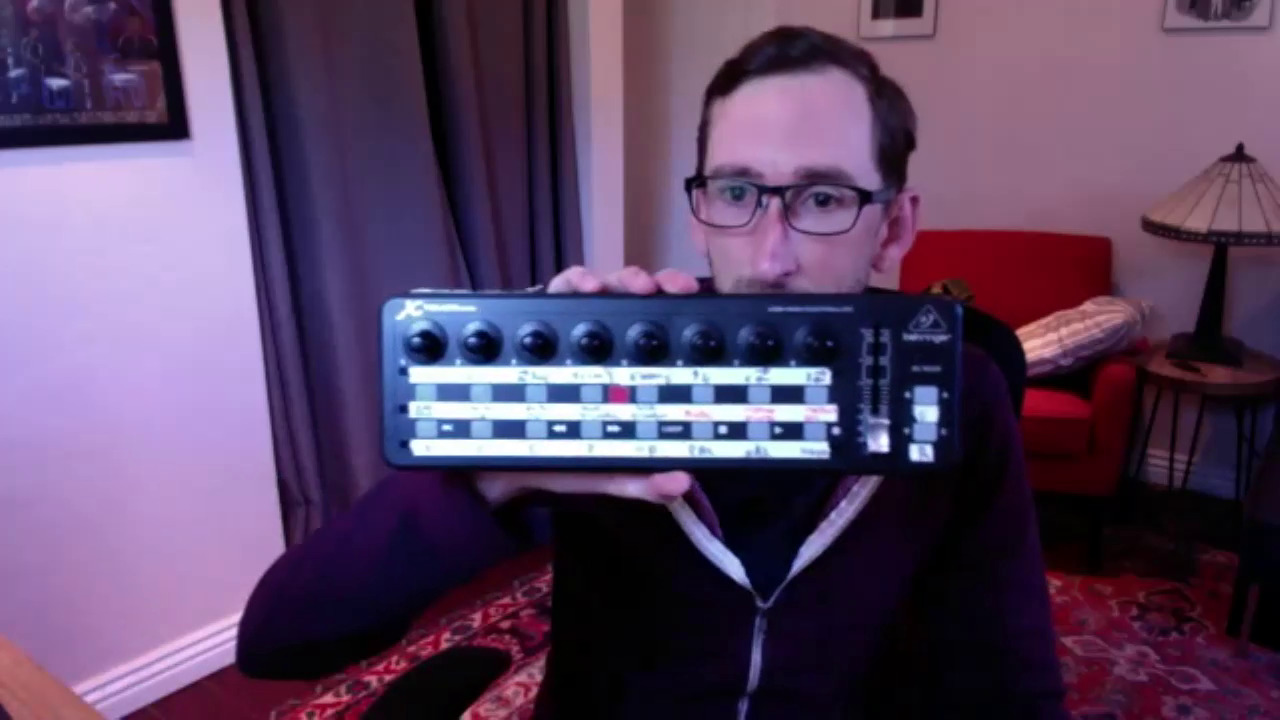
That’s excellent! I actually did something similar with a Steam Controller.
Oh nice!
I don’t really use it anymore but it was really good for selects, I had the touch wheel for jogging, and by using the A/B/X/Y buttons as like, Shift/Alt/Ctrl and what not you get like 64 button options on the controller so you could do a lot. I could just sit back in my chair, kick the signal to the TV and relax and pull selects or do simple edits or whatever. It was nice for my back [laughs].
Yeah honestly now that it’s set up every time I have to change it I’m like “oh, how do I do this again?” but it is what it is. That’s why I wouldn’t pitch it to someone in like a blog post or whatever cause I’m like, is anyone else gonna bother? [laughs] And now there’s more controllers out too.
Yeah that’s why I asked, because I’ve seen them and I know a colleague of mine, Scott Simmons, he seems to like the Loupedeck and stuff like that. They’re not really for me, I’ve found I’m fine with just the keyboard, but then again I’m not doing crazy elaborate edits or anything. My work is mostly in the 5-10 minute range at the most.
Yeah, the thing that I wish I had was a way to set things that you do with Premiere’s mouse, like adjust windows and stuff. I don’t think the Loupedeck does a lot of those things either. That just seems like a preset version of what I’ve got here. Mine I think has more buttons and more dials and it’s really small and it was only 60 bucks so… I was very tempted to get the Loupedeck, but I was like, it’s not actually adding anything that I don’t have here. I think it had some better color control, which might be nice, but I do color mostly with curves, which again is more of a mouse thing. You can’t really do that on a dial.
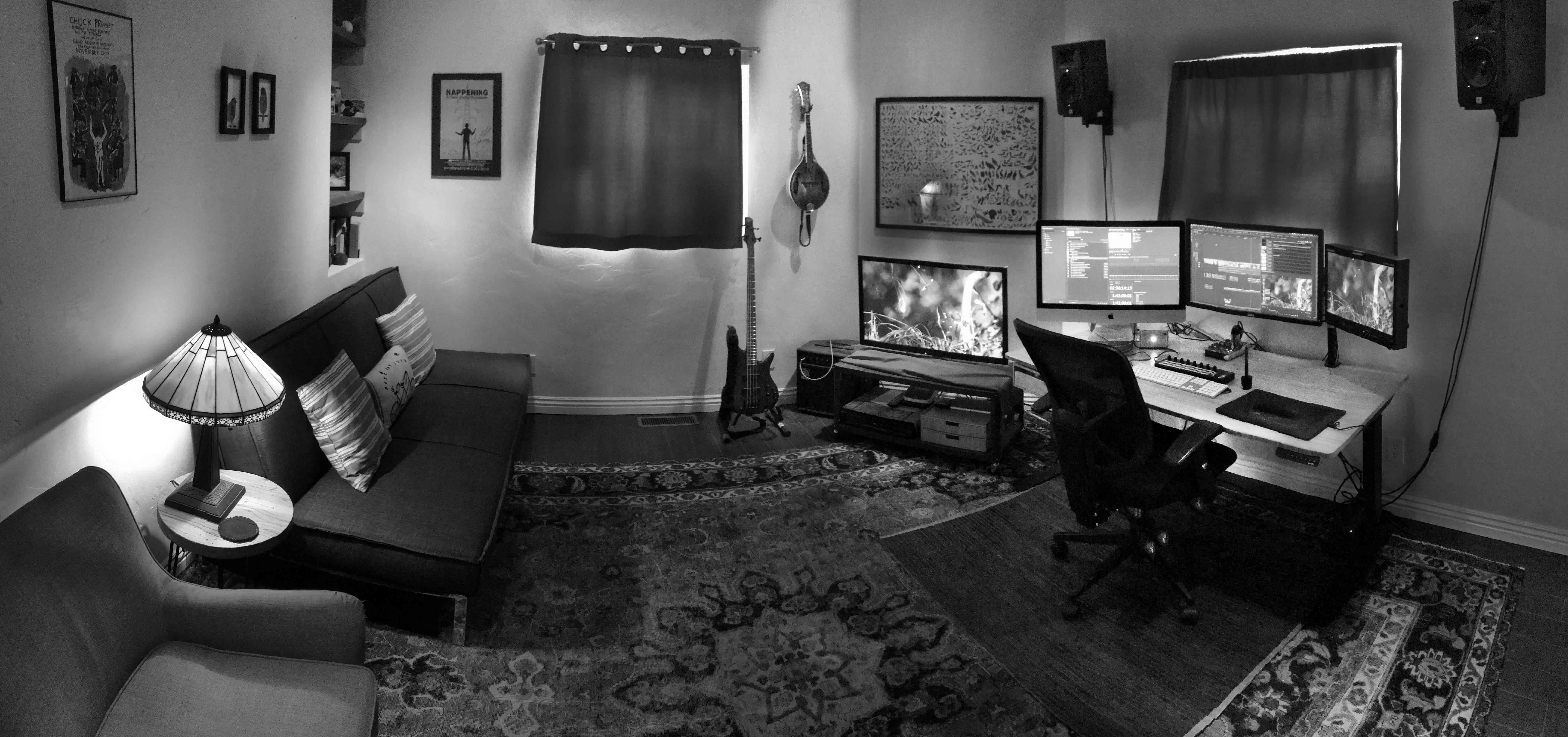
For sure. I know you did the whole edit in during the pandemic, how were you managing your time between work and family and whatnot? Is it just a very strict boundary thing? I know I’m not great with that separation.
I can honestly say I don’t think I’ve mastered that [laughs]. I have two young kids, one was born during the pandemic, one is three and a half and he lost his childcare. Our preschool closed for the first like three months, but we kept him out until the baby was born. So we didn’t have preschool for more than half of the edit. So my wife and I both kind of shifted schedules and we both had the flexibility to do that. We both kind of each took turns taking my son and then taking turns working. So we were able to devote significant parts of each day to just working. So in that sense, like when I get in I’m at the workstation, the door’s closed, I have my own office, I can just focus, but it’s definitely not the same as having a separate office and leaving the home. You know, now when my son’s in preschool, he’ll come home, run in and check on me, sometimes he’ll be sitting on my lap for a little while I’m working and, yeah, sometimes it is hard to focus. I can’t say I have a good answer for how I’ve solved that [laughs].
The other half of it is that it makes it really easy in that, like… six o’clock I’m done. I’m just going to go sit down and have a dinner right now. There’s no commute. So actually I think it’s allowed for a lot more family time, this whole period, which is really good without totally taking away from the film. And then there were plenty of nights when I’m like, “I’m going to go after bedtime and do a little more work.” So I liked that aspect of the work at home thing, and probably will keep it up as long as I can while the kids are young. Cause it’s makes a big difference, from the parent’s side of it, to be home, as well as the flexibility. Being able to be like, “oh, I’m waiting for something. No worries. I’m going to go water the garden.” “I’m going to go for a walk” you know, being able to kind of take care of some of that home stuff in between. It’s not a big deal if you’re suddenly waiting on something for a while.
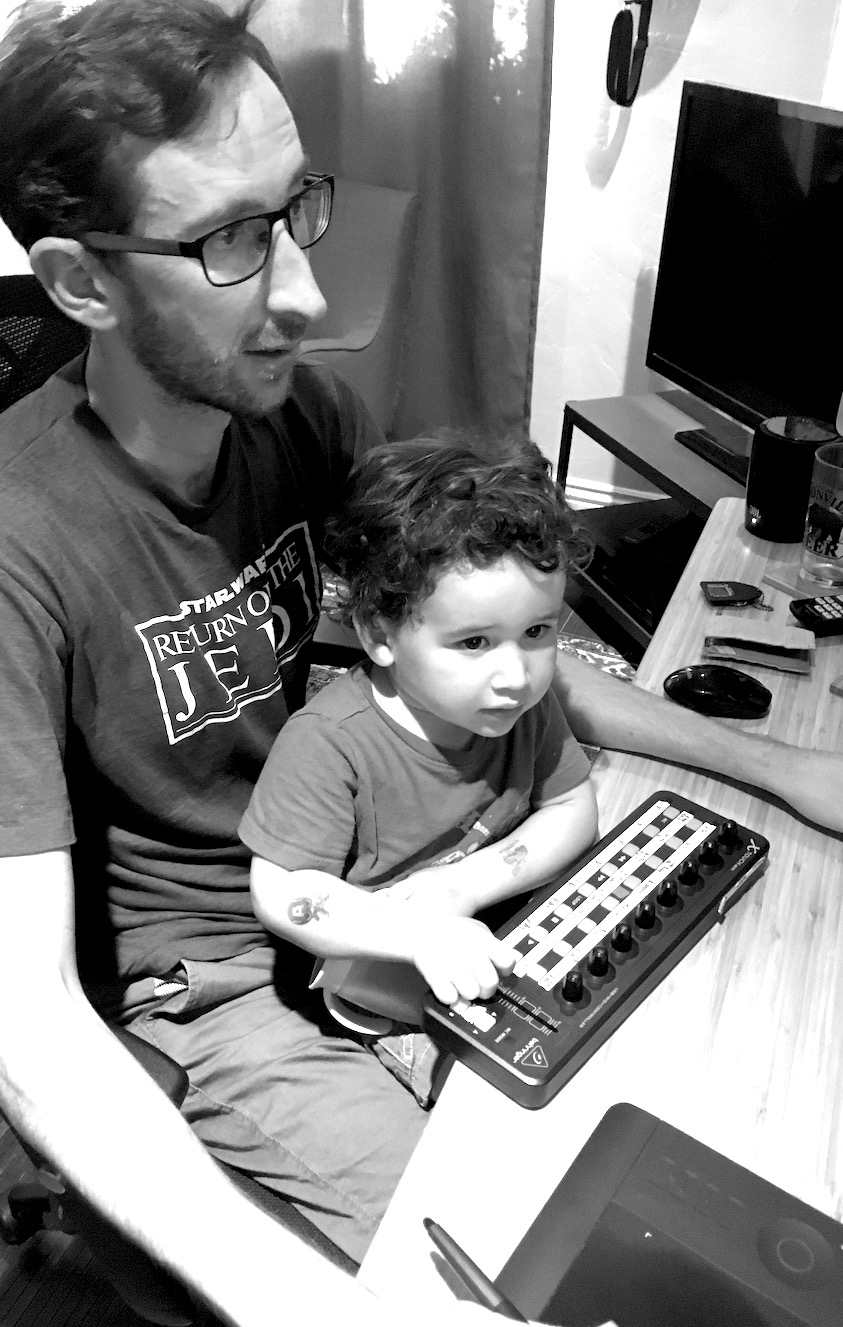
Like, that’s happening now, I’m doing more of a corporate thing right now and yesterday I was waiting most of the day but it kind of worked out because I was doing a lot of baby stuff and then in the evening I had feedback and I was able to do the changes. If I was over at the studio, where my client is all day, I would have been sitting there all day doing almost nothing, you know and then having to stay until 11.
I do very much value person-to-person edit time, and it’s different per director. The director I worked with on the Amy Tan film, he wasn’t the kind of director who would really sit with you in a session and kind of like work over micro edits, so we weren’t lacking in this particular case, but I think that having someone in-person, right in the room, looking at the same screen, that time to me is very important. Even if it’s just here and there throughout the course of the process, I feel like there’s things that happen in the way that you communicate, you know, you can read so much more into someone’s reactions to something when they’re right next to you, so I really want that back. Not just with the director, like… I’m glad to be working alone most of the time but going and trying to do a mix where you can’t actually sit with the mixer just makes no sense. And we actually, we just got to see the film at a small festival in person for the first time. And it was like a small festival, 25% capacity in the theater, still a beautiful theater, and I was almost crying because there’s people reacting, physically! Sighing, crying, right here with me! I hadn’t had that. The film had already premiered and been on TV and like, we hadn’t had that ever. So that’s something that’s like still a part of the whole cinema experience that I look forward to that being thing again. Being able to actually do screenings before you premiere, with people, and being like, “Oh, that brought a laugh.” or “We didn’t expect that to be so flat” you know? I think it makes a big difference on some of the choices along the way.
Oh, sure. I mean, that’s something that we kind of, even beyond this, when people are writing about “Are theaters dead? Is it streaming for life?” I’m like, “oh, I didn’t realize we were making movies to be watched by individuals in a bubble.”
Yeah, yeah.
There’s no way! People crave that experience, whether it’s the people making it or the people watching it.
Yeah it’s like the e-book displacing the physical books. Some people still like that physical book in their hands. I’m one of them. I think with theaters, obviously small ones are struggling, but that was true before the pandemic. I don’t think the need for in-person theaters is going to totally go away.
Absolutely. One other thing I read about the Amy Tan Doc is you said you were using Vimeo for notes versus something like Frame IO. Was that just because it was available and easy, or why was that the move?
Yeah. I mean, I have used Frame IO too, I think it’s really just that I had Vimeo first and the director I was working with, we had the pro account and we weren’t using any of the on-file note features within the software, which are pretty great in Frame IO, but we did our notes mostly just over the phone and we would just talk and go through it all and I’d be taking physical notes. So yeah I’m not like a big proponent of either Vimeo or Frame IO, it’s more than just that I happen to have the Vimeo account, so that’s kind of what I’ll do first. And if I’m working with someone who has the Frame account, I’m happy to use that too. Getting on the phone and talking, to me, is more valuable than the like, automated note-to-marker process, you know? It’s cool, but it’s like, “can you just tell me what you’re thinking?” That’s still kind of the best way to talk about changes.
Well and like you were saying, it’s probably easier to tell via someone’s tone of voice… what if the note just says “this might need to be changed”? It’s like “were they pissed about it? Were they sort of ‘meh’ about it?”
Yeah, yeah. Like I’m finding again on the thing I’m working on now, it’s much more applicable to have Frame IO, but some of the notes I feel like I’m asking for clarity on a lot of things. I feel like sometimes you get more detailed notes if someone’s typing it into an email with timecode or telling you on the phone. But it’s still working great for this little video I’m doing.
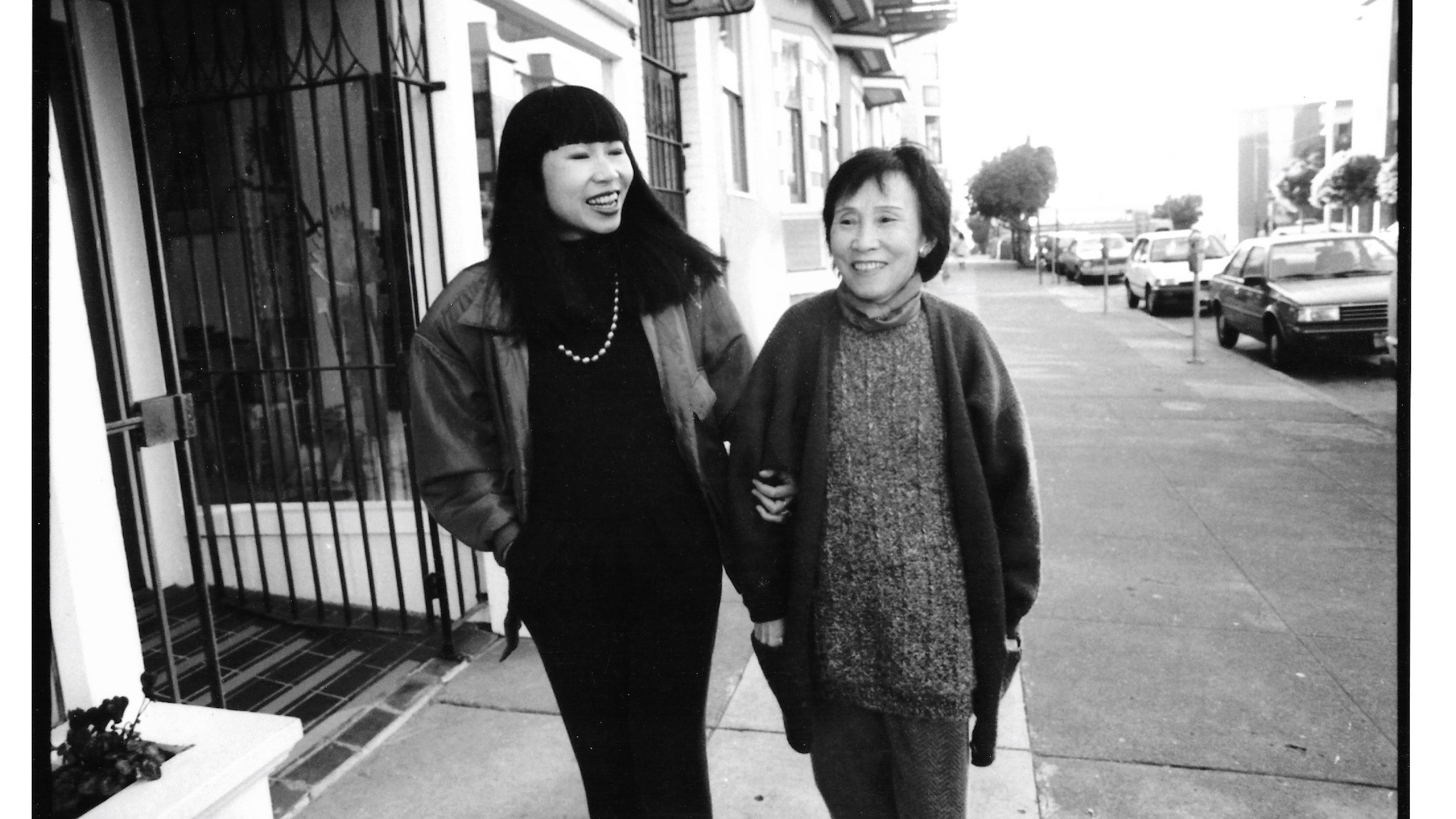
So this premiered at Sundance, what were some of the things that were positive about the sort of virtual experience and where do you think we’ll be able to sort of hybridize the virtual and in-person experience going forward that you think will be valuable?
Hybridize! That’s what I want. I don’t know if I would’ve gone if it was in-person cause like I said, I have two little kids and going away for a long weekend it’s like a lot to ask of my wife. And if I would’ve gone it probably would’ve been a fly in/fly out sort of thing. In this case the premiere experience itself was very strange because I just like sat over there and put it on my bigger monitor, but it was literally the same room that I edited in with no one here with me, it was just like, that’s not a premiere [laughs]. It was just like, “okay, I guess a lot of people are watching it right now, but I’m totally by myself” and then the Q and A was just like [this interview]. I was sitting right here in front of my computer. So that part was weird, but I was able to watch, I don’t know, half a dozen or more docs from the festival over the course of the weekend. Some I didn’t quite get to finish because I was trying to cram it all in late at night after the kids were asleep, but like, I don’t know if I would’ve seen that many if I had gone in person and like I said, I might not have gone at all.
I think that’s a huge deal for indie filmmakers. They want their friends and family to see what they’ve been working on for years! And like, “here it is, you can watch it!” I know my mom’s not going to travel to a festival or something, but she got to see Sundance from here. You know, that was pretty cool. So I really liked that aspect of it, expanding the audience for these indie festivals and giving indie filmmakers a chance to get a streaming situation, even if it’s just temporary.
Was there anything that you learned on the editing of this film that you’re going to take forward into the rest of your work? Like any tips or tricks you might have for people?
I mean, one thing that was really true for this film is it had a very clear kind of through line from the beginning, that relationship between Amy and her Mother, and she has many other aspects of her life, but the fact that we established that early and kind of stuck to that, that was really what guided the edit. And whenever we got into difficulty, it was always falling back on that through line. That’s something that like really stands out to me now is like a useful thing. Not every film is going to have such a clear through line and arc, but finding that and sticking to that is like a big deal for me after this experience.
The other thing though is the team. I don’t know if you know but Jamie, the director, died when we were making the film. We had all worked together before, we all had extreme amount of trust with each other and had done multiple films as a team, and Jamie had extreme trust for everybody. I haven’t had a ton of like “bad” team dynamics, but there was just something really particular about this, that all flowed from Jamie’s trust in other people, his ability to just eliminate any stress. There was never any stress, any pressure. If you had something bad going on in your life; “take a day off”. There was never any like deadlines, there’s never anything like that to kind of weigh on you. So being able to be able to relax and be comfortable and just work and then feel supported, but also not feel like anyone’s micromanaging you… Everyone just was so good at working together at every stage. Especially after he passed, there was never any point where someone’s like, “oh, I’m out. Like if he’s not here, I can’t do it.” Everyone was just like, “What do we gotta do? The deadline moved up two weeks? Okay.” Like, we had a composer do all the music and land three weeks or something. It was ridiculous. And the music is incredible! And she was doing another film for Sundance too! And she did it because she had this relationship with Jamie and was like, “I know these people and they like me and they are putting their trust in me” and she just did it. And it was just like, there were hardly any notes. It was incredible. There’s just things like that. Now as I’m going forward, I don’t want to work on a film where I don’t really trust the people I’m working with. That’s been a big deal.
Yeah that’s huge.
Even though there was like this a big at the end of it, I can’t help but think of it as incredibly good experience. which is sort of contradictory, but like the emotional experience was like really good because I felt this positivity about the whole thing despite losing Jamie. We just wanted to do justice to what he set out to do and people just really came together to do it.
That’s really cool, thank you for sharing that with me. Also thank you for your time, I really enjoyed that conversation.
Yeah, thank you!
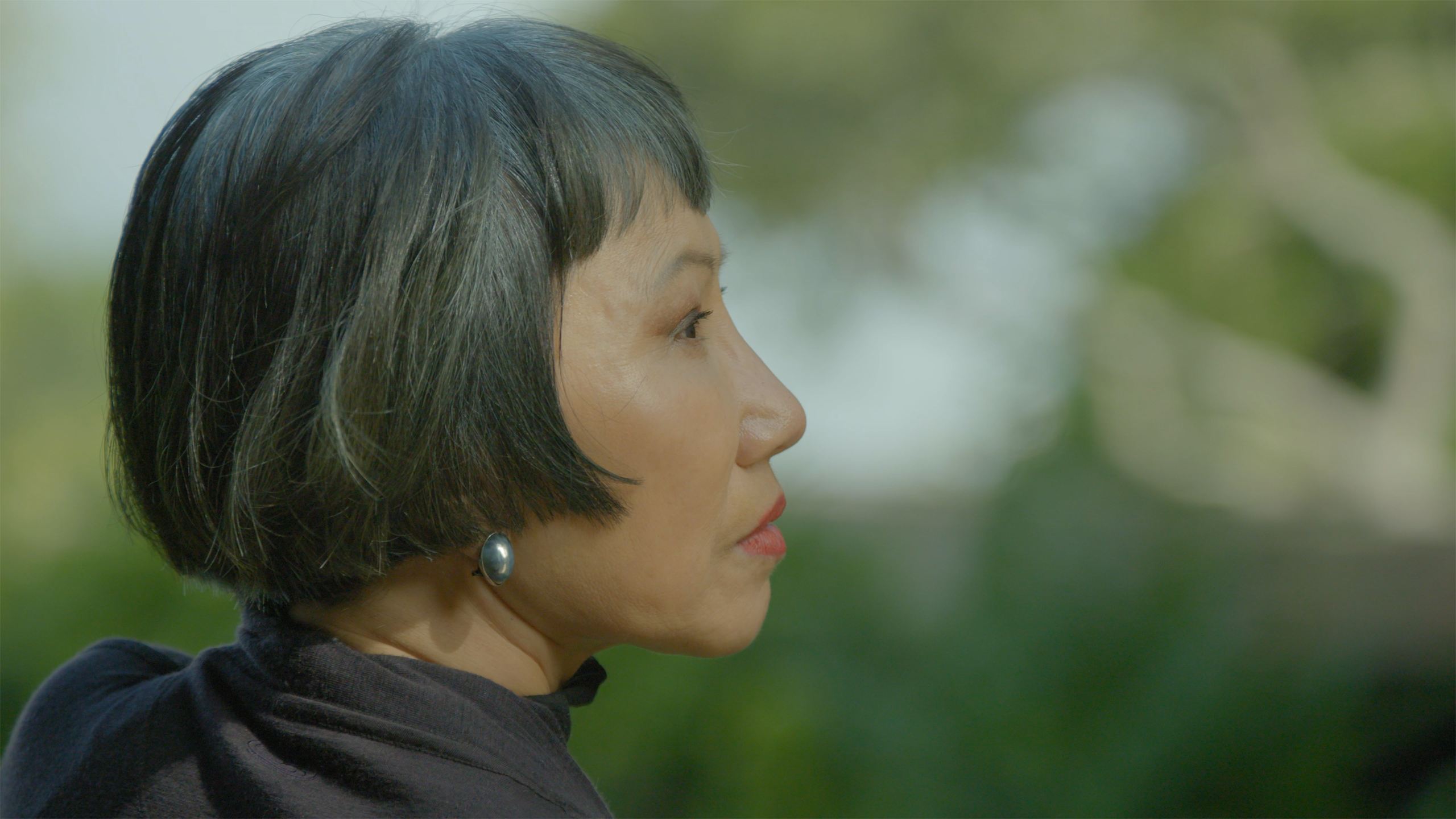

Filmtools
Filmmakers go-to destination for pre-production, production & post production equipment!
Shop Now